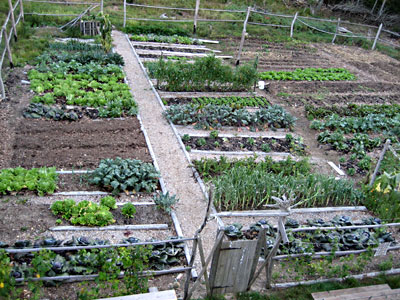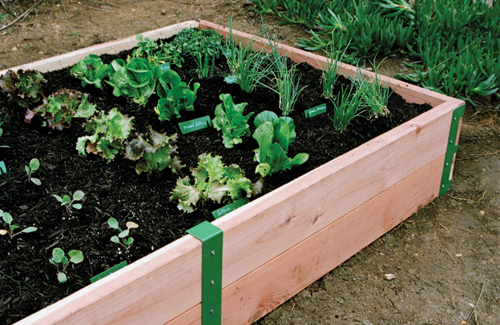Common Mistakes to Avoid in Homestead Gardening
Common Mistakes to Avoid in Homestead Gardening
Blog Article
Learn How to Cultivate a Prospering Horticulture Environment for All Skill Levels
Creating a growing yard is a diverse undertaking that can be welcomed by people at any ability level. By taking a look at key parts such as soil health and wellness, appropriate plant selection, and seasonal care regimens, one can create a sustainable gardening technique that yields enjoyable results.
Understanding Your Garden Room
In the world of gardening, recognizing your garden room is paramount to growing a growing landscape (Homestead Gardening). The primary step in this undertaking includes assessing the certain qualities of your plot. Variables such as dirt composition, sunlight exposure, and water drainage play crucial functions in determining the viability of your yard for numerous kinds of plants
Begin by performing a dirt examination to analyze pH degrees and nutrient material, which will notify any kind of necessary amendments. Furthermore, observe exactly how much sunshine your room obtains throughout the day. Different plants have varying light needs; some thrive completely sun, while others choose complete or partial color.

Finally, examine the available space and plan appropriately. This includes thinking about plant heights and infected guarantee ample area for growth without overcrowding. By obtaining a thorough understanding of your garden room, you set the structure for a successful gardening experience.
Picking the Right Plant Kingdoms
Choosing the right plants for your garden calls for careful factor to consider of various elements, including environment, soil problems, and personal choices. Beginning by analyzing your local environment, as certain plants grow specifically temperature level arrays and climate patterns. As an example, tropical plants may not survive in cooler areas, while hardy perennials can stand up to severe winter seasons.

Consider your individual preferences, consisting of visual allure and upkeep levels. Choose whether you choose dynamic flowers, lavish foliage, or edible crops. In addition, consider the time and initiative you agree to purchase plant care, as some selections require more interest than others.
Finally, think concerning the garden's format and light direct exposure. Sunshine patterns throughout the day will affect your selections-- some plants call for full sunlight, while others prosper in color. By thoughtfully analyzing these components, you can create a productive and harmonious garden customized to your atmosphere and tastes.
Necessary Gardening Tools
A well-appointed gardener can significantly improve their horticulture experience and outcomes. Vital horticulture devices are essential to cultivating a successful garden, despite skill level. A tough spade is invaluable for excavating and transforming dirt, while a trowel permits for accurate planting and transplanting of smaller plants.
Trimming shears are important for maintaining plant health and wellness by eliminating dead or thick branches, advertising much better air this hyperlink flow and growth. Additionally, a hand rake is useful for clearing debris and freshening the soil, making certain optimum conditions for plant origins.
Gardening gloves secure hands from sores, thorns, and chemicals, making them a necessary accessory. A watering can or pipe with an adjustable nozzle ensures that plants receive ample wetness without overwatering.
Finally, take into consideration investing in a strong wheelbarrow for delivering soil, plants, and tools around the garden efficiently. By setting up a top quality toolkit that consists of these vital products, garden enthusiasts can tackle various jobs with confidence and ease, leading the way for a growing gardening setting. Keep in mind, the right tools not only enhance performance but also improve the general satisfaction of the horticulture procedure.
Dirt Preparation and Maintenance
Quality dirt is the foundation of a successful garden, making proper prep work and maintenance essential for healthy and balanced plant growth. The initial step in dirt prep work entails evaluating its pH and nutrient levels. This can be attained via dirt screening packages offered at gardening centers or through specialist services. Based upon the test results, modifications can be made to optimize dirt problems for certain plant demands.
Including raw material, such as compost or link well-rotted manure, is important for boosting soil structure and fertility. This not just improves nutrition schedule but additionally promotes helpful microbial activity. In addition, proper water drainage is vital; heavy clay soils may require the addition of sand or perlite to improve aeration.
Normal upkeep of soil health and wellness consists of mulching, which preserves moisture and subdues weeds. In addition, rotating crops yearly helps avoid nutrient deficiency and lowers insect and illness threats. It is additionally essential to stay clear of over-tilling, which can interfere with dirt structure and damage valuable microorganisms.
Inevitably, a constant commitment to dirt preparation and upkeep will certainly result in a growing garden, guaranteeing that plants receive the essential nutrients they need for durable development and productivity.
Seasonal Care and Management

In springtime, concentrate on growing new seeds and seed startings, while also carrying out dirt tests to amend nutrient shortages. Consistently examine for illness and pests, as these can proliferate with the warming weather condition. Summertime needs regular watering and mulching to maintain moisture, along with trimming for better air circulation.
As fall strategies, it's time to prepare the garden for dormancy. This consists of harvesting plants, cleansing up particles, and applying a layer of compost to safeguard plant origins from frost. Consider growing cover crops to enhance the soil throughout the winter months.
Lastly, winter treatment is crucial. Inspect structures like greenhouses for damages and make certain appropriate insulation for sensitive plants. Regularly check for pests that might seek refuge inside. By adjusting your horticulture methods to the seasonal cycles, you can cultivate a prospering setting that sustains plant wellness year-round.
Conclusion
To conclude, growing an effective yard needs a thorough understanding of vital principles such as soil structure, sunlight direct exposure, and ideal plant option. Executing reliable dirt prep work and upkeep techniques, along with making use of the right tools, promotes an ideal growing environment. Normal seasonal treatment and management practices even more improve plant health and wellness and efficiency. By adhering to these foundational standards, people in all skill degrees can attain a flourishing garden that adds to both aesthetic pleasure and environmental sustainability.
Choosing the right plants for your yard needs careful consideration of numerous elements, including environment, soil conditions, and individual preferences. Conduct a dirt test to identify pH levels and nutrient material, which will certainly direct you in choosing plants that will grow in your yard.Last but not least, consider spending in a tough wheelbarrow for carrying soil, plants, and devices around the garden efficiently.Quality dirt is the structure of a successful yard, making proper prep work and maintenance vital for healthy and balanced plant development. Homestead Gardening.In verdict, cultivating an effective yard needs a comprehensive understanding of vital principles such as soil composition, sunlight exposure, and proper plant option
Report this page